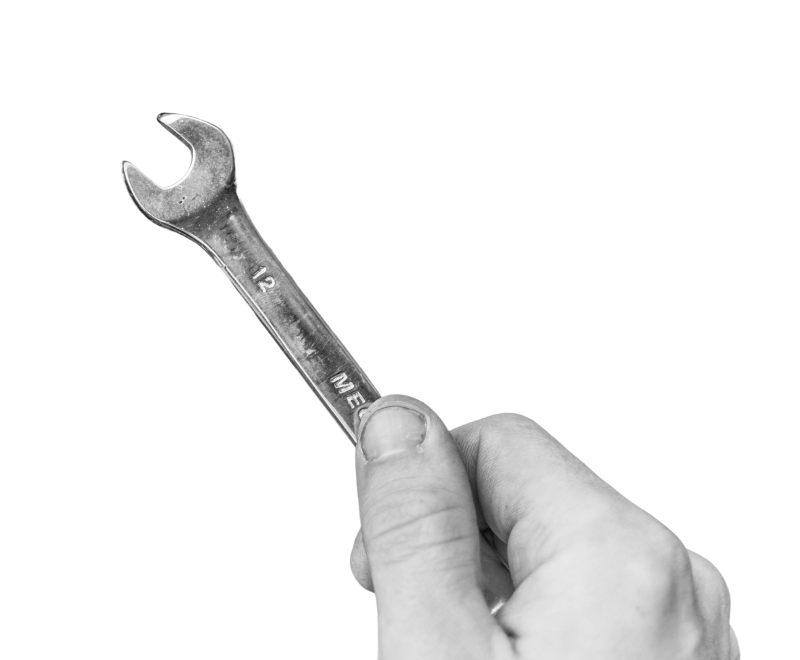You’ve just launched your platform after months (or even years) of development. It’s live for the world to see, and everything seems to be running smoothly. But a few weeks later, a user reports a bug. Then, a minor update to your payment system causes transactions to not go through for some users. Frustrated, you wonder: “Didn’t we just finish building this?”. If this sounds familiar, you are not alone. Many tech scale-ups assume the hard work is over once the code is delivered. However, no matter how well built, any digital platform requires ongoing maintenance to stay functional, secure and ready for growth. In this post, I’ll explain why post-launch maintenance matters, what cost you can expect and how proactive care can prevent expensive headaches later. By the end, you’ll know how to keep your platform running smoothly and avoid costly surprises.
Why does code need maintenance?
Launching your platform or releasing a significant update can feel like reaching the finish line. But in reality, it’s just the next phase of your platform’s journey. Digital platforms live within a constantly changing ecosystem, and your platform needs ongoing care to stay competitive. But why does your code need continuous attention?
Bug fixes: Even the most well-built platform will encounter issues once real users start interacting with it. These may be minor inconveniences, unexpected use cases, or critical problems that need urgent attention.
Security updates: With new cybersecurity threats emerging every day and another security breach reported every other week, it’s essential to keep your platform secure through regular updates and patch vulnerabilities to stay ahead of the risks.
Dependencies and third-party tools: Most applications rely on external dependencies. These are updated frequently, and keeping them current reduces migration time in the future and ensures that the codebase continues to work, enabling you to leverage the powerful new features released by dependencies.
Scalability and growth: As your platform grows and attracts more users, maintenance ensures it can handle increased traffic and new feature requests without breaking.
Post-launch maintenance keeps your platform secure, scalable, and ready for continuous improvement. This enables you to focus on your core business goals, build new features, and adapt quickly to an ever-changing market.
What types of post-delivery costs should you expect?
Ongoing development and maintenance come with costs, but understanding these upfront helps you avoid surprises. Here’s what you should plan for:
Scheduled updates: Regular updates and bug fixes keep your platform running smoothly and help prevent critical fixes later.
Security monitoring and patching: Frequent audits to identify and address vulnerabilities before they become a problem helps prevent costly security breaches in the future.
Infrastructure upgrades: As your platform grows, your hosting and server capacity may need to scale to handle new users and features.
Tool and service fees: Many platforms rely on third-party services like Stripe for payments, Digital Ocean for hosting, or Sentry for error tracking. These services often charge usage fees, which can increase as your platform grows.
Support hours or retainers: Several agencies offer service contracts where you pay ahead of time for a set number of hours each month. This is a great way to handle minor fixes and updates without worrying about unforeseen costs.
While these expenses may seem daunting, they’re a valuable investment in your platform’s performance, security, and lifespan. They ensure a seamless experience for your users. When your platform runs smoothly, users are more likely to stay engaged, return, and recommend your product, helping your business grow sustainably.
What happens if you skip maintenance?
Skipping or postponing maintenance may seem like an easy way to cut costs, but it can lead to more significant problems that are far more expensive to fix:
Unexpected downtime: Without regular maintenance, your platform is more likely to have bugs, slowdowns, or unplanned downtime. This can be incredibly frustrating for users, leading to lost revenue and damaged trust.
Compatibility and usability issues: Technology and user expectations evolve rapidly. New devices, browser updates, and operating system versions are released frequently, and design patterns or interaction standards shift over time. If your platform doesn’t adapt, users may find the experience outdated or frustrating, and today’s users quickly move on to alternatives.
Growing technical debt: Delaying maintenance causes minor issues to pile up, making future updates more complex and costly. Over time, this can slow down your ability to add new features or respond to market changes.
Neglecting maintenance is like ignoring a check engine light. You might get by for a while, but the longer you wait, the bigger (and more expensive) the problem becomes.
Proactive maintenance ensures your platform continues running smoothly and fosters user trust. It enables your team to focus on what really matters, creating value for your users.
Addressing concerns about maintenance
I get it. Post-delivery maintenance can feel like an ongoing cost you didn’t expect when the platform was launched. But here’s the reality:
You’ve already invested heavily in your platform. Maintenance is about protecting that investment. Like owning a home or a car, you need to service it to prevent more significant, more expensive issues down the line. Fixing things only when they break isn’t a strategy. It’s a risk. It’s like waiting for your roof to leak before fixing cracks. Sure, you could do that, but it will most likely result in more expensive repairs. Waiting until something breaks means dealing with downtime, user frustration, and emergency repair fees that can cost more than preventive updates. It’s normal to worry about costs. Whether you work with a partner or self-maintain, a clear strategy is critical. With a dedicated internal team, self-maintenance can definitely work. However, external partners can relieve your team from the strain of ongoing updates on your internal resources, allowing your team to focus on building new features to meet user demands.
Ultimately, maintenance is a safeguard. It keeps your platform adaptable, reliable, and ready to deliver value. So you can focus on growth without the constant worry of unexpected failures.
Post-delivery maintenance isn’t just an added cost. It’s essential to keeping your platform secure, functional, and ready to grow. By addressing bugs, updating dependencies, and planning for scalability, you can avoid costly downtime and ensure your platform continues to meet user needs.
Taking a proactive approach to maintenance protects your investment and keeps your platform performing at its best. Need help maintaining or optimizing your platform? Yummygum’s team is here to guide you every step of the way, whether it is troubleshooting issues, scaling for growth, or keeping your tech stack future-proof.


